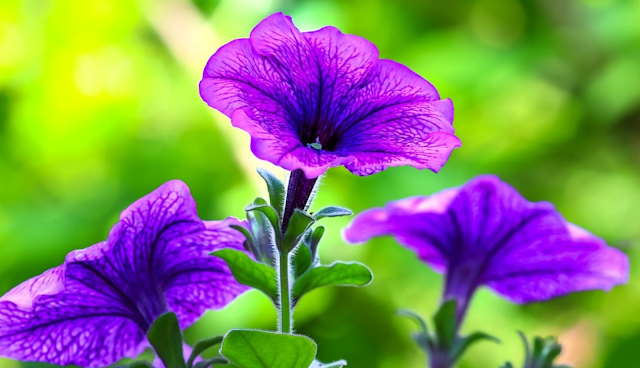Showing posts with label Petunia. Show all posts
Showing posts with label Petunia. Show all posts
Wednesday, 27 September 2023
Thursday, 15 June 2017
Night Sky Petunia
If you gaze Petunia at distant you
don’t have a strong enough telescope? Then don’t worry, because we have got the
flawless solution. So, all you need to do is to buy yourself some Night Sky
Petunias, because as you can see, their petals look like they’re hiding secret
little universes inside of them. With their many different patterns, colors,
shapes, and sizes, it's not unusual to gaze upon an unusual plant and realize
that it reminds you of something totally different. Because, one flower that
has taken this spectacle to the next level is the Night Sky Petunia. The
Petunia is an appealing purple bloom that will have you seeing stars literally.
The scientifically known as “Petunia cultivars”.
This cosmic flower features exclusive markings
reminiscent of a starry sky. The each distinctive plant features clusters of purple
flowers speckled with glowing white dots that look like celestial bodies. This hypnotic
characteristic has made Night Sky Petunias, which can reach an average height
of 16 inches and bloom during the spring and summer. The Petunia is a mainly popular plant among
gardeners and flower enthusiasts. So, what causes these ethereal patterns? A
large variance between day and night temperatures will cause temporary white
coloring to form on the flowers.” Thus, to guarantee that your Night Sky
Petunias are always shining, you should aim to keep them toasty warm during the
day and cool at night. If you'd like to grow your own galaxy-in-a-pot, you can
pick up a packet of Night Sky Petunia seeds from
Labels:
Petunia
Tuesday, 12 May 2015
Petunia is Small Flower Comes in Several Shapes and Colors
Petunias are half hardy annuals
and are related to the potato and other members of the nightshade family. Their
familiar trumpet shaped flowers come in several shapes. Moreover sizes and
colors, from the old fashioned single flowers to modern hybrids that are
striped, double ruffled and sometimes very large at least four inches across
for the grandifloras. The new multiflora petunias are small and single and
bloom very profusely they are also disease resistant. Since petunias make
compact plants with masses of color, they are excellent in flower borders. We
find that more modest, simpler petunias are less decimated by heavy rainstorms
than the more flamboyant ones; the latter, though are fine as container plants
in sheltered locations. The trailing petunias, such as the grandifloras, are especially
effective in pots, planters and boxes. Petunia colors are virtually unlimited;
there are even striped, bicolored ones. Height ranges from six inches dwarfs to
18 inches full size plants.
How to Grow Petunia
 Well, you need to sow seeds
indoors eight to ten weeks before the last frost, dropping the tiny seeds onto
the soil surface and pressing lightly with the fingers. Keep the seedlings
cool, and transplant then carefully to individual peat pots when each seedling
has four leaves. They can be set out in the garden 12 to 18 inches apart after
danger of frost in fairly fertile soil. Some petunias especially the doubles
are slow to grow from seed and you may be better off with nursery grown
seedlings.
Well, you need to sow seeds
indoors eight to ten weeks before the last frost, dropping the tiny seeds onto
the soil surface and pressing lightly with the fingers. Keep the seedlings
cool, and transplant then carefully to individual peat pots when each seedling
has four leaves. They can be set out in the garden 12 to 18 inches apart after
danger of frost in fairly fertile soil. Some petunias especially the doubles
are slow to grow from seed and you may be better off with nursery grown
seedlings.
Petunias are warm weather plants
but they sometimes do poorly during hot weather. If they look straggly and aren’t
blooming well, cut them back to a few inches tall and feed them liquid fertilizer
that you water in well. Petunias will self-sow readily, but the seedlings will
rarely look anything like the parents.
Labels:
Petunia
Subscribe to:
Comments (Atom)






